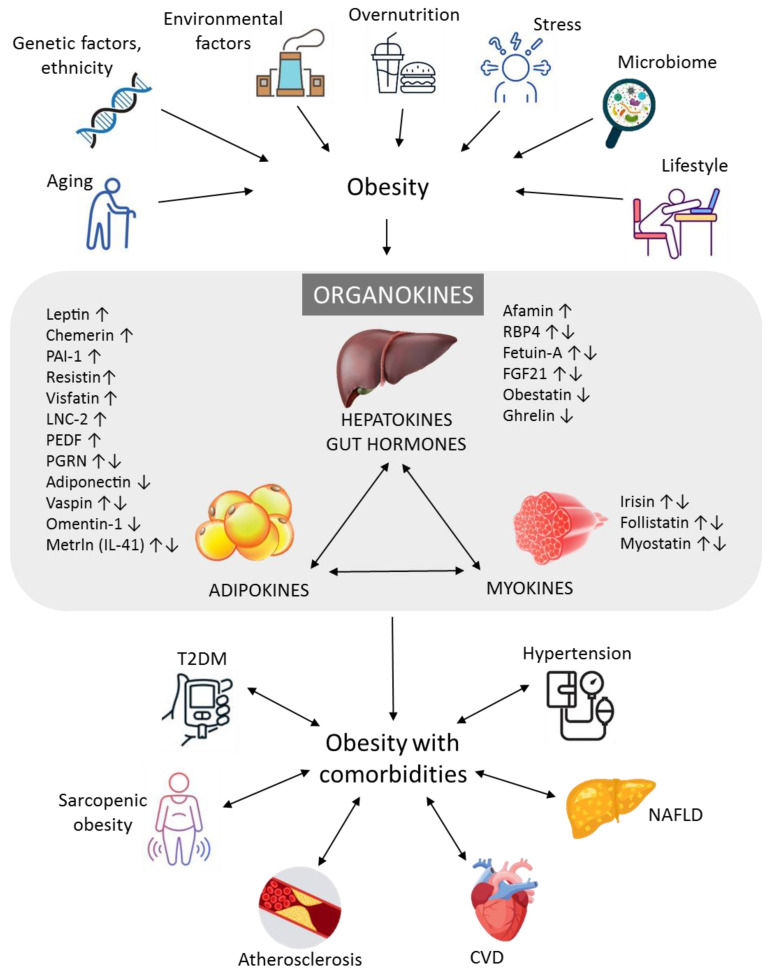Figure 1.
Relationship between different type of organokines in non-diabetic obese (NDO) subjects. Genetic and environmental factors, aging population, stress, sedentary lifestyle, impaired microbiome, overnutrition are associated with growing incidence of obesity. Visceral adipose tissue, liver, gastrointestinal tract and skeletal muscle are potent endocrine organs which regulate energy and metabolic homeostasis via the secretion of adipokines, hepatokines, gut hormones and myokines. These organokines can interact with each other and communicate through various endocrine, paracrine and autocrine pathways. The concentrations of organokines change during the pathological conditions leading to prediabetic and then diabetic status in morbid obesity. The impaired organokine secretion may lead to further unfavourable obesity-associated disorders including sarcopenic obesity, atherosclerosis, CVD and NAFLD. Abbreviations: ↑, increased; ↓, decreased; CVD, cardiovascular disease; FGF21, fibroblast growth factor 21; LCN-2, lipocalin-2; Metrln, meteorin-like, NAFLD; non-alcoholic fatty liver disease; NDO, non-diabetic obese; PAI-1, plasminogen activator inhibitor-1; PEDF, pigment epithelium derived factor, PGRN, progranulin; RBP4, retinol binding protein 4; T2DM, type 2 diabetes mellitus. The graphical components of this figure are available on the website of iStock by Getty Images, Calgary, Alberta, Canada.

